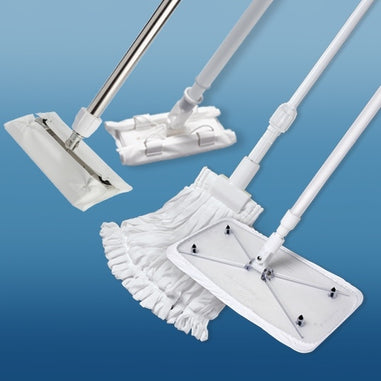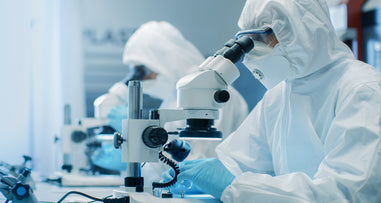- No products in the cart.
The EU GMP Annex 1 guidelines are an essential reference for pharmaceutical manufacturers and other industries that operate in cleanroom environments. Recently, the Annex 1 guidelines underwent a significant update, introducing new requirements and considerations for cleanroom operations. In this blog post, we will focus specifically on the impact of the update on cleanroom socks and provide guidance on ensuring compliance with the revised standards.
Microbial Contamination Control:
One of the primary areas addressed in the Annex 1 update is microbial contamination control. Cleanroom socks play a vital role in minimizing the risk of microbial contamination by providing a barrier between the footwear and the cleanroom environment. The updated guidelines emphasize the importance of choosing socks made from materials that are resistant to shedding particles and microbial growth.
Material Compatibility:
The revised Annex 1 places increased emphasis on material compatibility in cleanroom environments. Cleanroom socks should be made from materials that are non-shedding, low-linting, and resistant to the proliferation of microorganisms. It is crucial to select socks that are manufactured using materials that meet the necessary cleanliness and hygiene standards to minimize the risk of contamination.

Validation Processes:
The updated guidelines also highlight the importance of robust validation processes for cleanroom garments, including socks. Manufacturers must establish and maintain effective validation programs to ensure that the selected cleanroom socks consistently meet the required standards. This involves conducting regular testing, inspections, and audits to verify the performance and cleanliness of the socks.
Ensuring Compliance:
To ensure compliance with the updated EU GMP Annex 1 guidelines for cleanroom socks, consider the following steps:
-
Review and Familiarize: Take the time to thoroughly review the updated Annex 1 guidelines and understand the specific requirements related to cleanroom socks. This will provide a solid foundation for aligning your cleanroom practices with the revised standards.
-
Evaluate Current Sock Suppliers: Assess your current cleanroom sock suppliers and their adherence to the updated guidelines. Ensure they provide documentation that demonstrates compliance with the new requirements, such as certifications, test reports, and validation data.
-
Material Selection: Pay close attention to the materials used in the manufacturing of cleanroom socks. Look for socks made from non-shedding, low-linting fabrics that are resistant to microbial growth. Consider consulting with suppliers or industry experts to ensure the chosen materials meet the required standards.
-
Validation and Testing: Implement a comprehensive validation and testing program for cleanroom socks. This should include regular assessments of cleanliness, microbial contamination, particle shedding, and material compatibility. Collaborate with qualified testing laboratories to conduct the necessary analyses and obtain accurate results.
-
Documentation and Traceability: Maintain thorough documentation of your cleanroom sock selection, validation processes, and test results. This documentation will serve as evidence of compliance during audits and inspections.
- Training and Awareness: Educate your cleanroom personnel on the revised Annex 1 guidelines and the importance of compliance. Training programs should cover proper sock usage, maintenance, and handling to minimize the risk of contamination.
Choosing Compliant Cleanroom Socks: When selecting cleanroom socks, consider partnering with reputable suppliers who have a proven track record in providing compliant products. Look for suppliers who prioritize quality control, conduct regular testing, and maintain transparency regarding the materials and manufacturing processes used.
Additionally, consider seeking certifications or industry endorsements that validate a supplier's commitment to compliance, such as ISO 9001:2015 certification or compliance with relevant cleanroom standards (e.g., ISO 14644).
Conclusion:
In conclusion, the updated EU GMP Annex 1 guidelines have introduced significant changes and requirements for cleanroom operations, including cleanroom socks. Compliance with these updated standards is crucial to ensure the integrity and cleanliness of cleanroom environments.
Validation processes play a critical role in ensuring compliance. Establishing and maintaining effective validation programs for cleanroom garments, including socks, is necessary to consistently meet the required standards. Regular testing, inspections, and audits should be conducted to verify the performance and cleanliness of the socks.
When choosing cleanroom socks, work with reputable suppliers who prioritize quality control and transparency. Look for suppliers who conduct regular testing and maintain certifications or industry endorsements that validate their commitment to compliance.
Implementing comprehensive training programs and maintaining thorough documentation of sock selection, validation processes, and test results will further support compliance efforts. By following these steps, you can navigate the EU GMP Annex 1 update and ensure compliance for your cleanroom socks.
For over 40 years, Lab Pro Inc. has been committed to delivering highest quality cleanroom lab supplies, hand tools, lab equipment, chemicals, distance learning kits, and PPE apparel. Renowned by global medical device companies and laboratories, we ensure exceptional quality in every product. Contact us online or call 888-452-2776 to learn more. Discover top-notch lab supplies and elevate your experiments today!












































